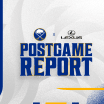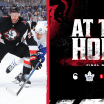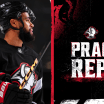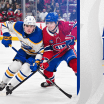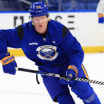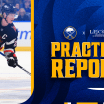Linus Ullmark had just put the finishing touches on a 41-save shootout victory over the Florida Panthers earlier this month when he was asked how he stayed poised through a heavy workload.
His answer was quick and concise.
"I breathe," he said, "and I enjoy the moment."
The message has been sewn onto Ullmark's blockers this season, written in Swedish in capital letters. An exclamation point adds emphasis: ANDAS OCH NJUT!
'Breathe and Enjoy': How Ullmark, Hutton use breathing as a mental edge
Buffalo's goalies explain how they prepare mentally

© Harry How/Getty Images

© Bill Wippert
BUF@DET: Ullmark blanks Red Wings with 41 saves

